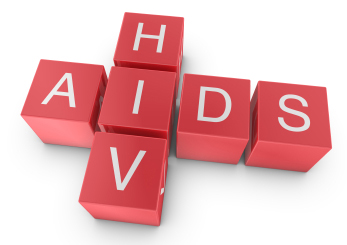|
|
| HIV Risk Behaviors Differ Among Male and Female Jail Inmates |
| By Lori Whitten, Staff Writer, RTI International, Rockville, MD, NIC - Corrections & Mental Health |
| Published: 10/22/2012 |
 Inmates are at higher risk for HIV infection than the general p opulationThis photograph shows a hand in a latex glove holding a vial of blood marked HIV-negative. , and research indicates that most have contracted HIV while living in a community setting. To identify the specific risky behaviors that might be targeted by prevention programs for this population, Leah M. Adams, doctoral student, advisor June P. Tangney, Ph.D., and their colleagues at George Mason University in Fairfax, Virginia, asked jail inmates to report whether they engaged in particular HIV risk behaviors—and if so, the frequency of such behaviors—before and after incarceration, The researchers found that inmates reported a higher incidence of behaviors that increase the risk for HIV infection—for example, intravenous (IV) drug use, use of dirty needles to inject drugs, and unprotected sex with multiple partners—in the 6 months before jail entry than in the year following release. Rates of these behaviors, however, remained at high levels and differed between men and women—findings that point to the need for gender-specific HIV education among jail inmates.
Inmates are at higher risk for HIV infection than the general p opulationThis photograph shows a hand in a latex glove holding a vial of blood marked HIV-negative. , and research indicates that most have contracted HIV while living in a community setting. To identify the specific risky behaviors that might be targeted by prevention programs for this population, Leah M. Adams, doctoral student, advisor June P. Tangney, Ph.D., and their colleagues at George Mason University in Fairfax, Virginia, asked jail inmates to report whether they engaged in particular HIV risk behaviors—and if so, the frequency of such behaviors—before and after incarceration, The researchers found that inmates reported a higher incidence of behaviors that increase the risk for HIV infection—for example, intravenous (IV) drug use, use of dirty needles to inject drugs, and unprotected sex with multiple partners—in the 6 months before jail entry than in the year following release. Rates of these behaviors, however, remained at high levels and differed between men and women—findings that point to the need for gender-specific HIV education among jail inmates.
The researchers analyzed HIV-risk data from 542 men and women from a single jail in Northern Virginia who were participating in a larger study on emotions and behavior. Most of the inmates (68 percent) were male, aged 31, on average, and were racially and ethnically diverse. The majority (87 percent) reported that they had received an HIV test at some point prior to their incarceration; however, many said they did not know their HIV status. A direct comparison of responses during the 30 days prior to incarceration and during the 30 days prior to participants’ 1-year post-release interview indicated that, overall, the inmates cumulative risk of contracting HIV immediately before incarceration was higher than the cumulative risk following release. Of the 222 participants who provided sufficient information to calculate HIV risk at both time points, 40 percent lowered their overall risk for infection post-release, 37 percent showed no change, and 23 percent increased their risk. Men and women did not differ on changes in cumulative HIV risk from before to after incarceration. They did, however, differ on the types of risk behaviors reported (see graph). Women were more likely to report HIV risk behaviors related to IV drug use, particularly sharing of used needles and materials—cooker, cotton, or rinse water used in the process of injecting drugs—which can act as a major source of infection. For most men, HIV risk behavior involved unprotected sex with multiple partners. Although the jail offered HIV testing, it was not required of inmates. Ms. Adams and colleagues suggest implementing mandatory confidential testing and providing HIV prevention programs during incarceration and at the time of jail release to increase awareness among inmates. Based on the gender differences observed, the researchers suggest that educational interventions for incarcerated women should focus on reducing the risks associated with IV drug use behaviors, whereas men may benefit from more information about condom use. For more information contact Ms. Leah M. Adams at the Department of Psychology, George Mason University in Fairfax, Virginia, ladamse@gmu.edu. Reprinted - National Institute of Corrections - Corrections and Mental Health Document available at: http://community.nicic.gov/blogs/mentalhealth/archive/2012/10/05/hiv-risk-behaviors-differ-among-male-and-female-jail-inmates.aspx |
Comments:
Login to let us know what you think
MARKETPLACE search vendors | advanced search

IN CASE YOU MISSED IT
|


HIV in jails can increase rapidly. This is a very good research for the prevention of this fatal disease. This thing is going to be helpful for the jailer and jail inmates and now bestessay promo codes are helpful for students. We should take this as a serious problem. This can be harmful for our society.